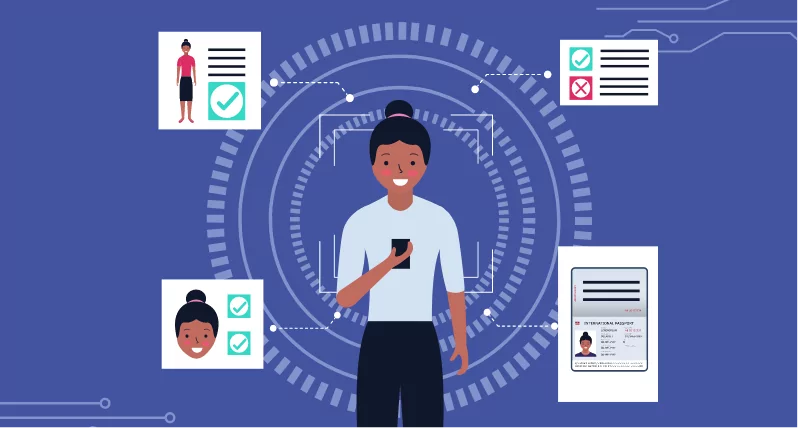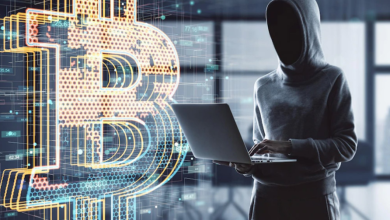
In today’s interconnected world, borders are no longer just physical checkpoints. They are data-driven gateways that process millions of travelers daily, ensuring the authenticity of their identities. Yet, for decades, counterfeiters have sought to outsmart these systems, producing fraudulent passports, driver’s licenses, and other identity documents. Among the most infamous of these providers was IDGod, a name that became synonymous with fake IDs on college campuses, online forums, and law enforcement watchlists.
While fake IDs may seem like harmless tools for underage drinking, their implications for border security and national defense are profound. Fortunately, the rise of Big Data analytics is giving governments and security agencies new tools to detect and dismantle identity fraud networks. This article explores the link between fake ID markets like IDGod, their impact on global security, and how Big Data is revolutionizing border protection.
The Global Fake ID Industry
The counterfeit identity market is a billion-dollar industry that stretches across continents. Providers like IDGod once specialized in high-quality driver’s licenses for American students, but the same technologies also enable the production of counterfeit passports, visas, and residency permits.
Key characteristics of the modern fake ID industry include:
- Globalized production: Documents printed overseas and shipped worldwide.
- Cryptocurrency payments: Providing anonymity for buyers and sellers.
- Dark web storefronts: Hidden websites marketing IDs to anyone with Bitcoin.
- Industrial-scale forgery: Capable of producing thousands of IDs per week.
These dynamics make fake IDs not just a youth issue but a geopolitical concern. When forged documents cross borders, they create vulnerabilities that extend to immigration, law enforcement, and counterterrorism.
IDGod: More Than a Student’s Secret
At its peak, IDGod was the most recognizable name in the fake ID trade. Its reputation was built on reliable shipping, realistic holograms, and the ability to bypass many standard ID checks.
What made IDGod especially concerning was its scale:
- Tens of thousands of counterfeit IDs circulating across the U.S.
- Packaging techniques that fooled customs inspections.
- Use of encryption and cryptocurrencies for secure transactions.
For a college student, IDGod was a way into a bar. For border officials, it was a red flag. Each counterfeit ID represented a potential pathway for smugglers, human traffickers, or organized crime syndicates.
Why Fake IDs Threaten Border Security
Borders rely on trust. An ID card, passport, or visa is essentially a key that grants access across national lines. When counterfeiters replicate these keys, the consequences are severe:
- Illegal Immigration: Fake residency cards and passports enable individuals to bypass legal entry requirements.
- Terrorism Risks: Terrorist organizations have historically relied on forged documents to move operatives across countries.
- Human Trafficking: Smugglers use counterfeit IDs to facilitate cross-border exploitation.
- Financial and Trade Fraud: Fake identities allow fraudsters to establish businesses, open accounts, and move goods illegally.
For governments, the fake ID industry isn’t just about minors sneaking into clubs—it’s about national security breaches.
Big Data: A New Line of Defense
Traditional border checks once relied on human inspection—guards manually comparing faces to photos and scanning barcodes. But modern borders integrate Big Data analytics into nearly every stage of identity verification.
1. Database Cross-Matching
Every legitimate passport or driver’s license is stored in government databases. Big Data systems allow border authorities to:
- Cross-reference ID numbers against official registries.
- Flag duplicates across regions.
- Detect expired, stolen, or non-existent identities.
This process happens in milliseconds, far faster than manual checks.
2. Biometric Integration
Fingerprints, iris scans, and facial recognition are now standard at many international borders. Big Data strengthens these systems by pooling biometric data from millions of travelers, improving accuracy and reducing false positives. A forged passport may pass visual inspection, but it cannot replicate biometric records.
3. Behavioral Analytics
Travelers leave digital footprints beyond their IDs: flight bookings, hotel reservations, financial transactions, and social media presence. Big Data analytics can detect anomalies, such as:
- A traveler booking last-minute one-way flights.
- Multiple identities tied to the same biometric scan.
- Inconsistent personal histories across databases.
Such discrepancies signal possible fraud or criminal intent.
4. Dark Web Intelligence
Governments increasingly use Big Data tools to monitor the dark web, where fake ID providers like IDGod often advertised. By tracking wallet addresses, communication patterns, and bulk shipment data, authorities can map networks and predict smuggling attempts.
Case Studies: Data in Action
U.S. Customs and Border Protection
By analyzing shipping records, U.S. authorities intercepted thousands of packages linked to IDGod and similar providers. Packages labeled as “toys” or “documents” were traced back to printing hubs overseas, leading to coordinated seizures.
European Union Smart Borders
The EU has implemented biometric entry/exit systems that cross-reference traveler data across member states. This interconnected system reduces the likelihood of a single fake ID working across multiple countries.
Interpol Databases
With Big Data, Interpol shares lost, stolen, and fraudulent document records in real time. Border agents can instantly check whether a passport presented at a checkpoint is flagged anywhere in the world.
Why IDGod Is Losing Ground
Despite its once-formidable reputation, IDGod and similar fake ID vendors face growing challenges:
- Data authenticity gaps: A counterfeit card can’t align with official databases.
- Shipping risks: Analytics highlight suspicious bulk shipments and customs evasion tactics.
- Buyer exposure: Students and fraudsters alike leave digital footprints when purchasing fake IDs.
- Network infiltration: Law enforcement agencies increasingly infiltrate dark web forums, exposing vendors.
Big Data ensures that no matter how convincing the physical card appears, its digital inconsistencies eventually give it away.
The Future of Border Security
Looking ahead, border protection will only grow more data-centric. Some innovations include:
- Blockchain IDs: Tamper-proof digital identities linked to decentralized networks.
- AI-Powered Screening: Predictive analytics that flag high-risk travelers before they reach checkpoints.
- Integrated Databases: International cooperation that creates unified fraud detection systems.
- Digital Passports: Mobile-based identification that eliminates physical documents altogether.
These innovations aim to make counterfeit IDs obsolete by replacing static documents with dynamic, data-driven identities.
Risks for Fake ID Buyers
While much focus is placed on border security, individual buyers of fake IDs also face risks, especially in a Big Data-driven world:
- Legal Consequences: Arrest and prosecution for attempting to cross borders with counterfeit documents.
- Identity Theft: Fake ID vendors often steal personal data from customers.
- Financial Loss: Many IDGod clones simply scam buyers.
- Permanent Records: Once flagged in Big Data systems, individuals may remain under watchlists for life.
The risks extend far beyond losing money—using a fake ID in the wrong context can impact careers, travel rights, and personal freedom.
Conclusion
The fake ID market, symbolized by names like IDGod, represents more than just student nightlife—it is a challenge to border integrity, immigration systems, and national security. But in the age of Big Data, the tide is turning.
By integrating cross-database checks, biometrics, behavioral analytics, and dark web intelligence, border authorities are dismantling the very networks that once seemed untouchable. What was once a cat-and-mouse game at physical checkpoints has evolved into a sophisticated battle fought in data centers and digital ecosystems.
For counterfeiters, the message is clear: the future belongs to data. And for those who still gamble with fake IDs, whether at a bar or at a border, the consequences are growing steeper in a world where every identity leaves a trace.






